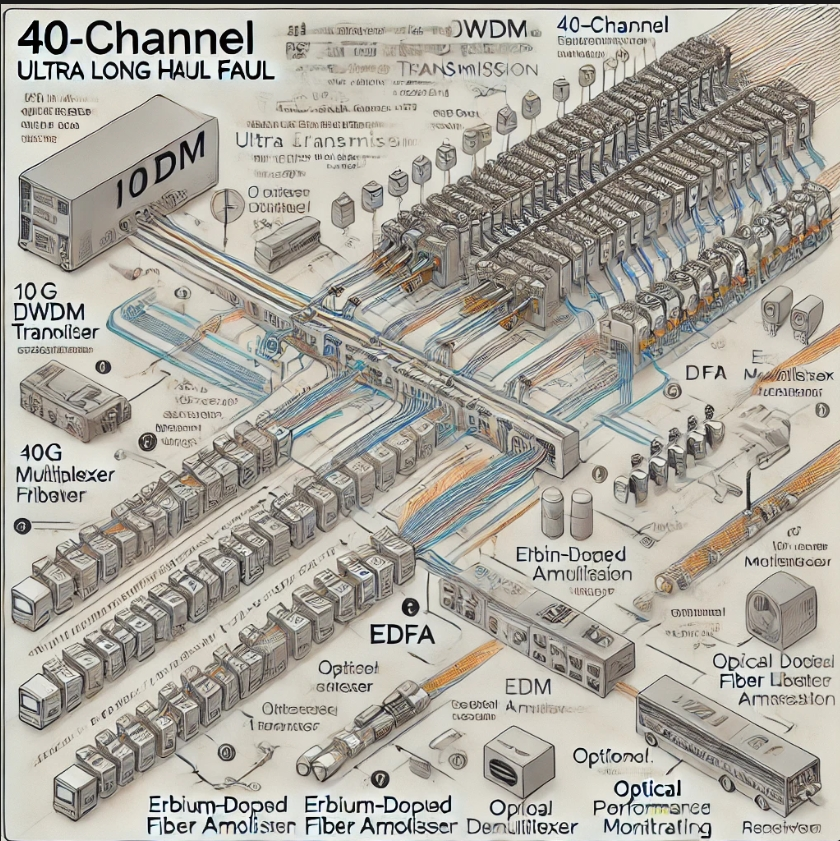Application Scenarios:
Transmission is limited by factors such as optical cable attenuation and dispersion. Optical cable spans are generally 160-400km or even longer, with attenuation ranging from 40-90dB. Domestic optical cables are mainly G.652, with an average dispersion coefficient of 18ps/nm.km, requiring a transmission equipment dispersion tolerance of more than 3200ps/nm. The dispersion tolerance of general transmission equipment cannot meet the system requirements. Our company’s self-developed ultra-long-distance transmission system features long cable spans, relay-free operation, and high stability and reliability. It is widely used in scenarios requiring transmission across deserts, Gobi deserts, snow-capped mountains, or other uninhabited areas.
System Technical Features:
High Output Optical Power Amplifier: By increasing the optical power at the transmitting end, the transmission distance is extended.
Nonlinearity Suppression Technology: Through specialized techniques, the nonlinear effects of optical signals in the transmission system are suppressed, improving the field system transmission distance.
Encoding and Forward Error Correction (EFEC): Using powerful encoding and error correction technology, the system’s OSNR tolerance is improved, enhancing the receiving sensitivity by 9-12dB.
Hybrid Amplification Technology: By incorporating technologies such as DRA (Distributed Raman Amplifier) and ROPA (Remote Optically Pumped Amplifier), hybrid amplification of the optical transmission system is achieved. This effectively suppresses OSNR degradation, improves receiver-side system indicators, and extends the transmission distance.
High Dispersion Tolerance Transmission Equipment: Through specialized technology, the transmitted optical signal achieves ultra-high dispersion tolerance. For example, a 2.5G signal can achieve 400km transmission without dispersion compensation.
Dispersion Optimization Management: By utilizing grating-type, fiber-type, and electrically tunable dispersion compensators, optimized management of system dispersion is achieved, enhancing system transmission performance.

